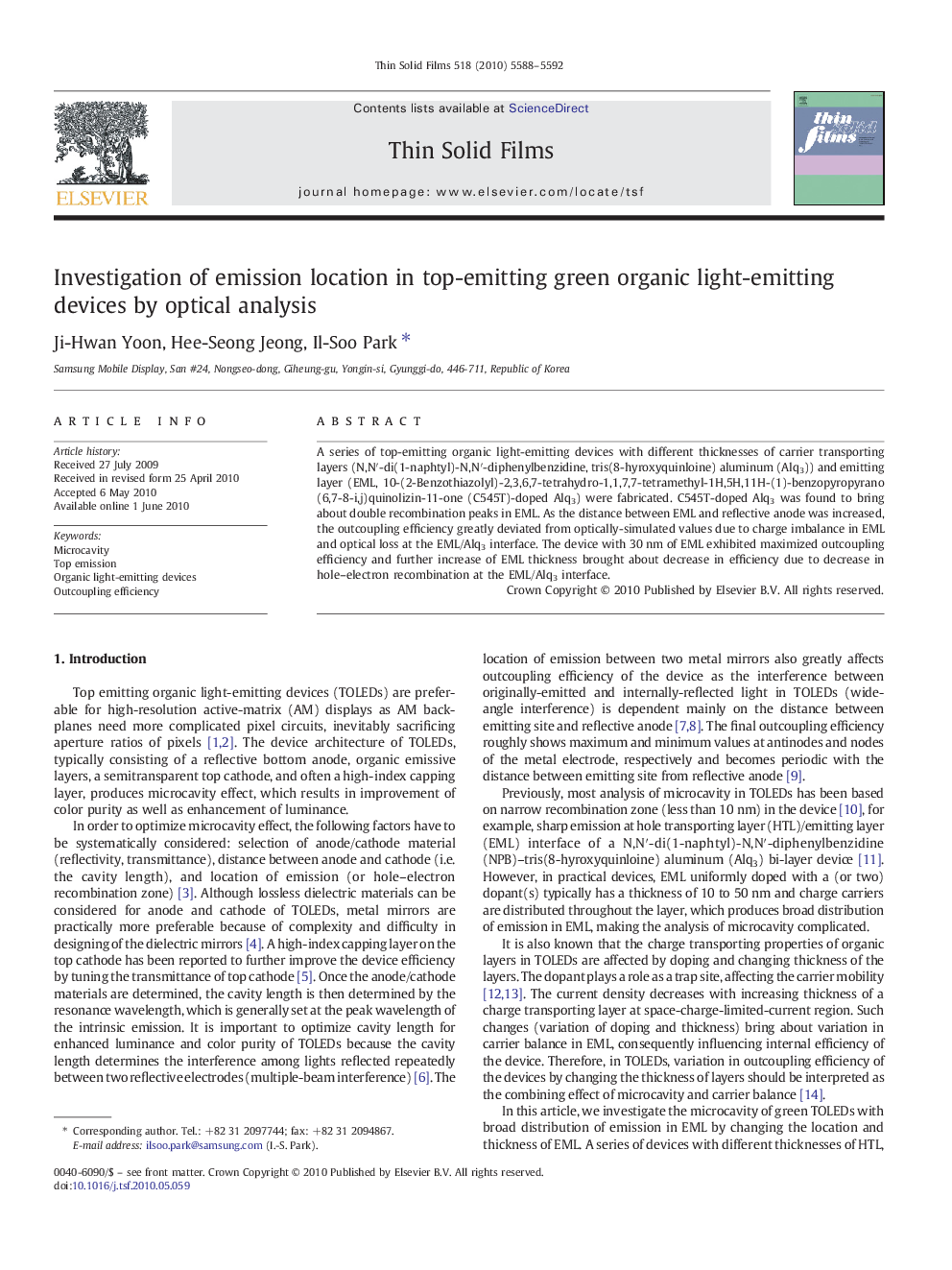| Article ID | Journal | Published Year | Pages | File Type |
|---|---|---|---|---|
| 1670086 | Thin Solid Films | 2010 | 5 Pages |
A series of top-emitting organic light-emitting devices with different thicknesses of carrier transporting layers (N,N′-di(1-naphtyl)-N,N′-diphenylbenzidine, tris(8-hyroxyquinloine) aluminum (Alq3)) and emitting layer (EML, 10-(2-Benzothiazolyl)-2,3,6,7-tetrahydro-1,1,7,7-tetramethyl-1H,5H,11H-(1)-benzopyropyrano(6,7-8-i,j)quinolizin-11-one (C545T)-doped Alq3) were fabricated. C545T-doped Alq3 was found to bring about double recombination peaks in EML. As the distance between EML and reflective anode was increased, the outcoupling efficiency greatly deviated from optically-simulated values due to charge imbalance in EML and optical loss at the EML/Alq3 interface. The device with 30 nm of EML exhibited maximized outcoupling efficiency and further increase of EML thickness brought about decrease in efficiency due to decrease in hole–electron recombination at the EML/Alq3 interface.
